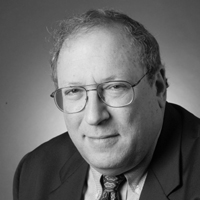 |
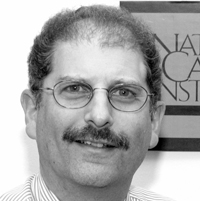 |
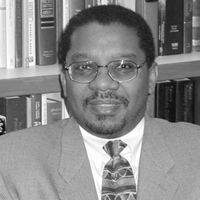 |
Robert Dickler
|
Lee Helman
|
Talmadge King
|
New members join Board of Governors
The Clinical Center Board of Governors welcomes three new members: Robert Dickler, Lee Helman, M.D. and Talmadge King, M.D. Each will serve a three-year term to June 2007.
Robert Dickler is Senior Vice President, Division of Healthcare Affairs at the Association of American Medical Colleges (AAMC). He oversees activities that focus on the interface between the healthcare delivery system and academic medicine such as policy and regulatory analysis/monitoring; liaison with the federal government's executive branch and other organizations; development and maintenance of databases relating to hospitals, health systems and faculty practice plans; oversight of various research projects; and the development of educational programs and publications. AAMC's Division of Healthcare Affairs also provides membership services. He received his master's degree, and pursued doctoral studies, in healthcare administration at the University of Minnesota. For nearly a decade, he held a variety of administrative positions at the University of Minnesota Hospital and Clinic, before becoming Director of the University of Colorado Hospitals in 1981. In 1987, Mr. Dickler was appointed the General Director of the University of Minnesota Hospital and Clinic and Assistant Vice President of the Health Sciences Center. He has held several faculty positions and, among his past local and national professional activities, served on the executive committee and as chair of the Accreditation Council for Graduate Medical Education and chair of the Metropolitan Hospital Section of the American Hospital Association.
Dr. Lee Helman is the Chief of the Pediatric Oncology Branch and Deputy Director, Center for Cancer Research, at the National Cancer Institute (NCI), NIH. He also serves as a Professor of Pediatrics and Oncology at the Johns Hopkins University. Dr. Helman is a member of the Board of Directors of the American Society of Clinical Oncology, the Scientific Advisory Committee of the Children's Oncology Group and the Pediatric Oncology Task Force of the American Association for Cancer Research, and was a founding member and past president of the Connective Tissue Oncology Society. He is an associate editor for the journals Cancer Research and Clinical Cancer Research. Dr. Helman's NCI lab currently has two major areas of investigation related to the biology of pediatric sarcomas-the role of insulin-like growth factors on the biology of these tumors and to identify the molecular mechanisms of metastases using animal models of spontaneously metastatic tumors.
Dr. Talmadge King is the Constance B. Wofsy Distinguished Professor and vice chairman of the Department of Medicine at the University of California, San Francisco (UCSF), and chief of medical service at San Francisco General Hospital (SFGH). In his role at SFGH he leads a department with more than 110 physicians and scientists and more than 500 support staff. He received his medical degree from Harvard Medical School, followed by a residency at Emory University Affiliated Hospitals, Atlanta, Georgia, and a pulmonary fellowship at the University of Colorado Health Sciences Center in Denver. He is a member of the Association of American Physicians, American Clinical and Climatological Association, Fleischner Society, and is a fellow of the American College of Physicians and the American College of Chest Physicians. Dr. King's research interest is the pathogenesis, diagnosis and management of inflammatory and immunologic lung injury. He has served on the Lung Biology and Pathology Study Section, NIH; the Subspecialty Board on Pulmonary Disease of the American Board of Internal Medicine Pulmonary; and the Allergy Drugs Advisory Committee, Center for Drug Evaluation & Research, Food and Drug Administration.
The Board of Governors is a 15-member group, established in 1996 by the Health and Human Services Secretary, consults with, and makes recommendations to, the NIH and Clinical Center directors on issues relating to the operations of the Clinical Center, including budget and strategic and operational planning. The full board meets three times annually and the executive committee meets twice a year. Board membership, appointed by the NIH director, is comprised of physicians, scientists and healthcare managers from across the NIH and representing the nation's top academic medical centers and from across the NIH.
Back
to Top
Committee carves clear directions for CRC
For newcomers to the Clinical Center, it may seem difficult. But when the Mark O. Hatfield Clinical Research Center opens, finding your way around may be a task for employees and patients alike.
But a small group of people have made a large building easy to navigate for patients and employees.
With more than 3,000 signs needed for the new building, the CRC Way-finding and Signage committee, led by Ann Ellis and Larry Eldridge, had three months to determine how many signs would be needed, where they would be placed, the design and mock-ups, and user input.
It was the short time table that produced good results.
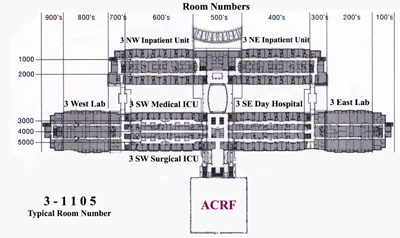 Each room will have a 5-digit room number. The first digit of the room number is the floor; the second is the corridor along with the room number. There are five major corridors, labeled from 1000 - 5000.
Each room will have a 5-digit room number. The first digit of the room number is the floor; the second is the corridor along with the room number. There are five major corridors, labeled from 1000 - 5000.
|
"The time frame of the project actually helped, because signage is something that is continuous and can go on forever," said Ellis, program coordinator. "We just want to have a system that is streamlined and will help visitors and patients move through the CRC effortlessly."
Ellis said the team, which includes employees from Hospitality Services, Nursing Department, Admissions Office, Social Work Department, and Patient Representative Laura Cearnal, learned from many of the obstacles faced with signage in the Clinical Center, ACRF and South Lobby. "The architectural design of the signs will be simple, yet elegant," she said. "The signs will be easy to find, easy to read and aesthetically pleasing."
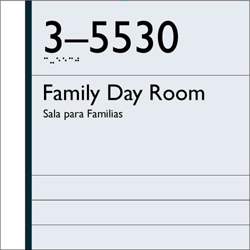 Example of room sign
Example of room sign
|
Working with The Douglas Group, (the sign consultant on the project) an architectural design company, black and white signs with simple lines, large text and anti-glare materials were created. The vinyl letters and numbers contrast with the background finishes of the sign material, making them legible, and magnetic slide plates (commonly referred to as inserts) allow for flexibility. Each sign will have either a room number or general area description along with Spanish translation, international symbols where needed and each will meet the Uniformed Federal Accessibility Standards.
Mock-ups of the signs were created and placed throughout the third floor of the CRC. A focus group of patients walked through and offered feedback as to the location of the signs and how legible and accurate the signs were.
"We received some really good feedback from the patients," said Eldridge. "Essentially, we are right on target and they responded well to the location and design of the signs."
Patient Representative Laura Cearnal, who participated in the walk through said that the patients were willing and extremely helpful. "One patient even called back later with more ideas after talking with a family member about the signs," she said.
Signs will not be the only directional markers within the CRC. According to Ellis, there will also be directories, maps, guides, and the Hospitality staff stationed in the lobbies to give directions to patients and visitors as they enter. Additionally, staff that has direct contact with patients will be trained to direct them to the appropriate place.
"We are hoping to incorporate an educational component into the way-finding program that will help staff members to do a better job of directing patients and visitors throughout the CRC," said Ellis. "Signs are not the primary component of successful way-finding program. Assistance provided by staff and printed material are the foundation, while signs and directories are intended to reinforce the directions."
With good directions, excellent signage and the overall design of the CRC, Eldridge said the building will be a lot easier to navigate than the current building.
"Because the building is horizontally built, it's best to use a geographical system to label the units and give directions," he said.
The Inpatient Units, Day Hospital units and Medical ICU and Surgical ICU will be located by their geographic position in the CRC — Northwest, Southwest, Northeast and Southeast. The labs will either be East or West.
The room numbering system in the CRC is actually easy to use once one understands the basis of its design.
There are five major corridors, labeled from 1000 - 5000. Each room will have a 5-digit room number. The first digit of the room number is the floor; the second number is the corridor along with the room number.
By using general names to identify specific areas within the facility, the system is adaptable. For example, instead of identifying the specific treatment within a specific area, the sign would read 3 SE Day Hospital.
"This system is highly flexible and can be easily maintained. This gives us an opportunity to make changes after everything is installed," said Eldridge. "The way finding and sign committee achieved its goal, which provides for permanent signs to be installed in the CRC prior to occupancy."
Back
to Top
New Clinical Center website design debuts
The Clinical Center's external
web pages have undergone a
major redesign. The updated
web presence was launched on
February 9.
The top three levels of the site
have been redone to reflect web
usability practices making it easier
for staff, clinical researchers and
existing or prospective patients to
navigate the information they
need. This iteration of changes is
designed primarily to improve
the web experience for external
visitors to the Clinical Center
site. At the same time it will
maintain easy access to existing
pages and sites used mainly by
employees and associates on
campus or from an NIH-identified
remote-access
workstation. Existing department,
office, service and other program
sites are not currently affected by
this initial "facelift." Through
ongoing updates of pages over
time future plans call for the
integration of the new navigation
and graphic continuity
throughout the Clinical Center's
web pages.
What's new
There is a new graphic appearance
to the site. New colors, new fonts, a
more sophisticated and subtle use of
moving graphics impart an updated
"look and feel." The new site is also
508-compliant, giving disabled
employees and members of the
public access to the information that
is comparable to the access available
to others. The Section 508 law was
enacted in 1998 by Congress to
require federal agencies make their
electronic and information
technology accessible to people with
disabilities.
Changes to note on the new
homepage include a Highlights
section that can be expanded to
cover current events and activities; a
Hospital Concierge section that
presents a ready-reference for visitor
and patient information so practical
concerns are solved quickly without
searching; a centrally-placed major
features section similar to a
newspaper's front page; and a Staff
Only link for Clinical Center
employees and NIH associates
contains internal content available
only to the appropriate user
audience. Clickable drop-down
menus under each of the main
information categories (About the
Clinical Center, For Researchers and
Physicians, Participate in Clinical
Studies) allow quick and easy access
to subcategories.
Usability engineering
Web usability engineering was
applied to develop the new
information architecture for the
homepage. Usability standards were
the driving force behind the redesign
and development effort. In 2003,
three rounds of usability testing were
conducted.
Round one provided what turned
out to be valuable insights into
users' minds about where they
expected to find various types of
information, and how easy it was to
confuse them by using too many
ambiguous categories. These
findings resulted in a second web
prototype for the Clinical Center
homepage with only three main
global navigation information
categories. Round two of testing
proved a better understanding of
users' information-seeking habits had
been achieved with nearly all
scenarios easily
navigated by the
majority of user
participants.
There were still
some areas of
confusion such
as use of an
online "bulletin
board" and some
information was
perceived as
missing. These
areas were
addressed in a
third prototype
design.
Round three
of testing was
done to
determine if the
new information
architecture and design developed
through testing rounds one and two
was more usable than the existing
(most recent) Clinical Center site.
The overall purpose of this study
was to answer the questions: on
which site is it easier to find
information to complete task
scenarios, which site is preferred
overall and which visual "look" is
preferred overall.
User participants in this round
were over 21 years of age and had
no connection to healthcare, science
or medicine. Although each was
thought of as a "prospective" patient,
at least seven turned out to be from
the patient community with the
remainder representing the general
public. The group included a strong
mix of gender, age, education,
ethnicity, and web use habits for
participants.
The testing was done in a
controlled usability testing
environment. A test facilitator
worked one-to-one with a user
participant as they worked through
information-seeking tasks and related
real-life scenarios of the web content
and its structure. Each participant
worked with the facilitator for one
hour. During the test sessions,
participants were tested with both
versions of the site, using the same
scenarios. The order of sites tested
alternated to minimize the effect of
learning or other biases that might
occur. User participants were timed
from the moment they were given
the first scenario until they fulfilled
the information-seeking task, or
indicated to the facilitator they
wanted to give up on that task and
move on.
Each user participant was tested on
20 scenarios and related information-seeking
tasks. The tasks included
such things as deciding whether or
not to participate in clinical studies,
finding standards for clinical research
and if there are any job openings at
the Clinical Center. The scenarios
were written to represent the site's
main audience groups and their
goals. Participant findings (five
datasets) demonstrate strong favor
for the new information architecture.
A few minor usability problems
remain as well as some ambiguity
regarding the preferred design look.
In general it can be said that the new
site tests as more user-friendly than
the "old." More specifically:
- The new site allowed people to
find information faster than the old
site (time elapsed).
- The new site allowed people to
find information better (success rate).
- 17 of 19 participants said that
they felt the new site was easier to
find information on.
- 17 of 19 participants said they
preferred the new overall site.
Recommendations from this third
round of testing based on the overall
findings were to replace the previous
site with the new one, provide a
more sophisticated graphic look and
address some miscellaneous issues in
the next phase of design and
development. This iteration of
usability prompted the web team to
conclude that the proposed
information architecture provides a
substantially more usable interface
for the Clinical Center website, as
compared to the previous site.
The redesign and development
work is the result of the efforts of the
Clinical Center web team led by
Dianne Needham, deputy chief,
Office of Communications. Richard
Barnes, senior web designer, CIT,
NIH; Doug Sur, web systems
administrator, Networking and
Applications; and members from
Constella Group, a commercial firm,
comprise the team.
Visit the new site at
http://clinicalcenter.nih.gov. To share
comments, questions and suggestions
contact Dianne Needham at 301-594-
5788 or dneedham@cc.nih.gov.
Back
to Top
Fitilis joins Clinical Center as special assistant to COO

Hillary Fitilis
|
Hillary Fitilis has joined the Clinical Center as Special Assistant to the Chief Operating Officer, Maureen Gormley, and will serve as a consultant for supervisors and managers on employee issues and a liaison to the NIH Workforce Relations Division.
In her position, Fitilis will advise management officials on matters concerning employee issues and related policies as well as work to develop a plan to achieve consistency across the organization in actions related to employee conduct and performance.
"I am very excited about my position and hope that I will make a valuable contribution to the mission of the Clinical Center," said Fitilis. "My position is new to the Clinical Center and I have received a very positive response from managers and supervisors regarding my role."
Fitilis received her J.D. degree from American University and served as an agency counsel for the past five years in the Office of the General Counsel, Department of Health and Human Services. In that position, she provided legal advice to management officials and defended the Department in EEO actions before the Equal Employment Opportunity Commission and appeals of adverse actions before the Merit Systems Protection Board. In the course of providing legal advice to management officials, she became an expert in policies and procedures related to federal employment. Although she will not be functioning in a legal capacity in this position, she will draw upon her expertise in the area of federal employment law.
Among other responsibilities, Fitilis plans to establish a training program for management officials on employee issues. She will also serve as an internal consultant to the COO, managers and supervisors to ensure compliance with applicable regulations and policies.
Back
to Top
Fourteen new nurse managers selected for CRC
Fourteen new nurse managers have been selected for the new nursing management structure for the Mark O. Hatfield Clinical Research Center.
The selection and redesign of the nurse manager role came about due to the fewer patient care units in the CRC than in the current building.
All nurse manager positions for the CRC and ACRF were posted as part of a competitive national search.
"Search committees screened, interviewed and forwarded the most qualified candidates to the Service Chiefs, who were the selecting officials.," said Hastings. "These candidates were then interviewed by the selecting official and members of the clinical research community."
Fourteen candidates were selected.
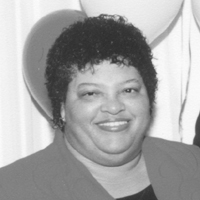
Sandra Bowles
: 7E - Adult Behavioral Health Program of
Care
|
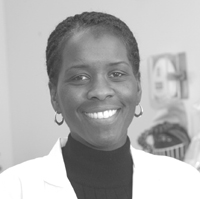
Janice Davis
: Medical-Surgical Specialty Clinics
|

Awilda (Wendy) Holland:
Oncology/Hematology Clinics
|

Judith Johnson:
1E - Alcohol Behavioral Health program
of care
|
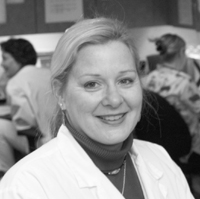
Susan Johnson:
3B - Surgical Oncology
|
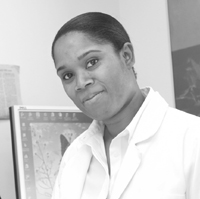
Antoinette Jones-Wells:
3E- Hematology/Oncology Day Hospital
|

Teresa Kessinger:
7D - Neuroscience
|

Deborah Kolakowski:
3D South - Surgical Intensive Care
|

Georganne (Gigi) Kuberski:
1D- Pediatric Behavioral Health program
of care
|
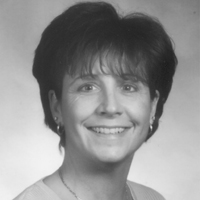
Anita Marban:
3D North - Medical Intensive Care and
Procedure Unit
|
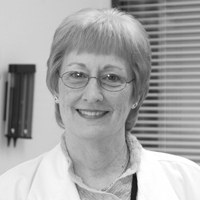
Kathleen Musallam:
Behavioral Health Clinics
|

Lori A. Purdie:
5D Surgical Specialties/Transplant/
Medical-Surgical Day Hospital
|
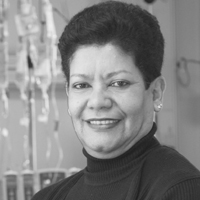
Priscilla Rivera:
3C- Hematology/ Oncology / Transplant
Unit
|
Back
to Top
Atkinson awarded for outstanding service
 Arthur Atkinson
Arthur Atkinson
|
Dr. Arthur J. Atkinson, senior advisor in Clinical Pharmacology to the Clinical Center Director, has been awarded the 2004 Henry W. Elliot Distinguished Service Award.
Sponsored by the American Society for Clinical Pharmacology and Therapeutics, the award recognizes individuals who have made significant contributions to the organization.
"It's nice to be recognized for contributing, but I feel that it takes many contributors and a lot of people working together to make an association like this thrive," said Dr. Atkinson.
Dr. Atkinson directs the NIH ClinPRAT postdoctoral training program, the NIH Clinical Center course on Principles of Clinical Pharmacology, and an NIH computer workshop on Principles of Pharmacokinetic Data Analysis: Modeling and Simulation.
He has been a member of the American Society for Clinical Pharmacology and Therapeutics for more than 25 years, serving as president from 1995-1996. He also served as a member of the board of directors, chairman of the Committee on Coordination of Scientific Sections and associate editor of the organization's journal, Clinical Pharmacology & Therapeutics.
During that time he was instrumental in allowing the organization to purchase its journal from the Mosby Publishing Company, made educational and training materials available to the larger Pharmacological community, and was contributing author and lead editor for a textbook, Principles of Clinical Pharmacology, all royalties from which benefit the NIH Foundation. Additionally, Dr. Atkinson has enabled the Society to distribute videotapes of lectures from the Clinical Center's evening course that the textbook is based on.
Atkinson received his A.B. degree in chemistry from Harvard College and graduated from Cornell University Medical College in 1963. He served as a clinical associate in the Laboratory of Clinical Investigation, NIAID, and received postdoctoral training in clinical pharmacology at the University of Cincinnati. In 1970, Dr. Atkinson started a clinical pharmacology center at Northwestern University Medical School, where he served in the departments of medicine and pharmacology for 24 years before accepting a position at the Upjohn Company as corporate vice president of clinical development and medical affairs. Following the merger of Upjohn with Pharmacia, he returned to the NIH Clinical Center where he began his research career.
Atkinson is a Master of the American College of Physicians and is former president of the Chicago Society of Internal Medicine and the American Board of Clinical Pharmacology.
The American Society for Clinical Pharmacology and Therapeutics was founded in 1900. Headquartered in Alexandria, Va., the society has 2,200 members worldwide and works to advance the practice of clinical pharmacology for the benefit of patients and society.
Back
to Top
Fence completion brings new way to enter campus
The construction of the fence
surrounding the NIH campus
is nearing completion. Once
finished, the fence will include eight
vehicle/pedestrian access gates and
nine stand-alone pedestrian access
gates.
All of the vehicle access gates will
have a security guard presence, and
pedestrian access will be available
during business hours. The other nine
pedestrian access gates are standalone
gates that do not require a
security guard. "Once the fence is
completed and the gates are in
operation, we can rely more on
electronic access security systems
rather than having a guard present at
each post," said Arturo Giron,
associate director, Security and
Emergency Response, ORS, NIH.
"The pedestrian access gates, or
portals, will be equipped with an
electronic security system allowing
all NIH employees entry by waving
an NIH ID badge in front of a card
reader," explained Giron.
For added security, the pedestrian-only
portals were designed such that
once the NIH employee waves the ID
in front of the reader, they open the
gate to an entryway where they wave
their ID card in front of another
reader and then enter the campus.
"This additional security measure
will prevent any piggybacking and
help ensure only those who are
authorized to gain entry," said David
Chung, Division of Physical Security
Management.
Until the electronic systems for the
pedestrian entrances become fully
operational, employees will be able
to manually open the gate to enter
and exit the campus.
For more information on the
perimeter fence and its access gates,
contact David Chung at 301-496-
6893.
Back
to Top
March Calendar
|
|
3
Grand
Rounds
12-1 p.m.
Lipsett Amphitheater
Ethics Grand Rounds
Non-Beneficial Pediatric
Research: Is It Ethical To
Enroll Children In Research
When There Is No Chance of
Benefit To Them
P. Pearl O'Rourke, M.D.,
Partners Healthcare Systems,
Boston
Wednesday Afternoon Lecture
3 p.m.
Masur Auditorium
The Marvels and Illusions of
Intuitive Thinking
Daniel Kahneman, Ph.D.,
Princeton University
10
Grand
Rounds
12 noon - 1 p.m.
Lipsett Amphitheater
Contemporary Clinical Medicine: Great Teachers
Managing Heart Failure:
Taking the Congestion Out of
Congestive Heart Failure
Lynne Stevenson, M.D.,
Harvard Medical School
Wednesday Afternoon Lecture
3 p.m.
Masur Auditorium
Tiny Conspiracies: Cell-To-
Cell Communication in
Bacteria
Bonnie L. Bassler, Ph.D.,
Texas Southwester Medical
Center
16
Special Tuesday Lecture
3 p.m.
Masur Auditorium
Transcriptional Control of
Heart Development and
Disease
Eric N. Olson, Ph.D.,
University of Texas
|
17
Grand
Rounds
12-1 p.m.
Lipsett Amphitheater
50th Anniversary Celebration of Clinical Research
New Insights and Approaches
to Patients with
Extreme Insulin
Resistance
Dr. Phillip Gorden, NIDDK
Clinical and Genetic Insights
into Multiple Endocrine
Neoplasia Type-I (MEN)
Stephen Marx, M.D., NIDDK
24
Grand
Rounds
12-1 p.m.
Lipsett Amphitheater
50th Anniversary Celebration of Clinical Research
The Dysregulated Inflammation
of Chronic Granulomatous
Disease
John I. Gallin, M.D., CC
Autoimmunity: A Consequence
of the Life and Death Struggle
of Lymphocytes
Stephen Straus, M.D., NCCAM
31
Grand Rounds
12-1 p.m.
Lipsett Amphitheater
50th Anniversary Celebration of Clinical Research
The Development of TNF
Blockers for Rheumatoid
Arthritis
Peter Lipsky, M.D., NIAMS
The Development of
Recombinant Immunotoxins for
the Therapy of Cancer at NIH
Ira Pastan, M.D., NCI
Wednesday Afternoon Lecture
3 p.m.
Masur Auditorium
Structural and Digital Biology
of Macromolecular Complexes
Wah Chiu, Ph.D., Baylor
College of Medicine
Lectures
can be accessed on the NIH Videocast at http://videocast.nih.gov
|
Back
to Top
Editor:
Tanya C. Brown
Contributing
writers: Dianne Needham, John Iler, Colleen Henrichsen
|
|
Clinical Center News, National Institutes of Health, 6100 Executive Blvd., Suite 3C01, Bethesda, MD 20892-7511. Tel: 301-496-2563.
Fax: 301-402-2984. Published monthly for CC employees by the Office of Clinical Center Communications, Colleen Henrichsen, chief. News,
article ideas, calendar events, letters, and photographs are welcome.
Back
to Top
|
|


